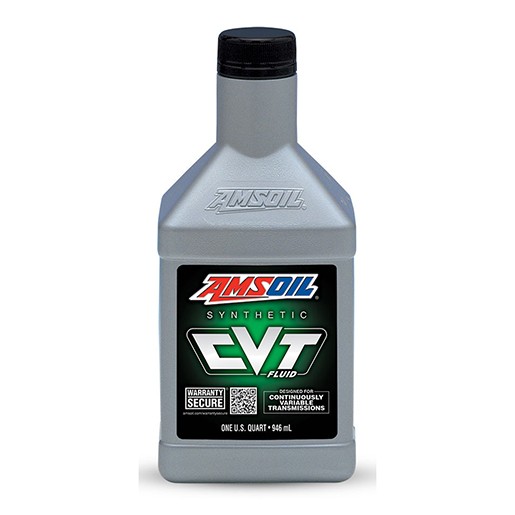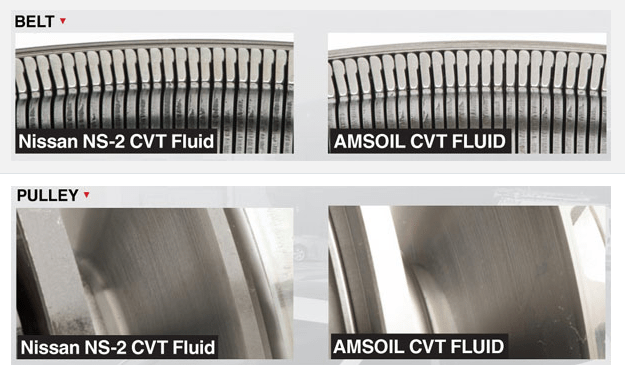What is CVT Fluid? Here’s Everything You Need to Know
Welcome to our comprehensive guide on CVT fluid! Whether you’re a car enthusiast or just a regular driver, understanding the ins and outs of your vehicle’s transmission system is crucial. In this article, we will walk you through everything you need to know about CVT fluid, from its basic function to its importance in maintaining a smooth and efficient driving experience.

CVT, or continuously variable transmission, is a type of transmission system that provides smooth and seamless gear shifting without the need for traditional gears. However, to ensure the proper operation of a CVT, high-quality CVT fluid is essential. It serves as a lubricant, coolant, and hydraulic fluid, all in one.
We will delve into the key properties of CVT fluid, its recommended change intervals, and the importance of using the right type for your vehicle. Additionally, we will discuss common signs of CVT fluid degradation and the potential consequences of neglecting its maintenance.
By the end of this article, you’ll have a solid understanding of CVT fluid and its role in keeping your vehicle running smoothly. So, let’s dive in and unravel the mysteries of CVT fluid together!
What is CVT fluid?
CVT, or continuously variable transmission, is a type of transmission system that provides smooth and seamless gear shifting without the need for traditional gears. However, to ensure the proper operation of a CVT, high-quality CVT fluid is essential. It serves as a lubricant, coolant, and hydraulic fluid, all in one.
CVT fluid is specifically designed to meet the unique demands of a CVT system. It has excellent thermal stability, which means it can withstand the high temperatures generated by the transmission. Additionally, it has special additives that provide superior lubrication, preventing wear and tear on the transmission components.
The importance of CVT fluid in a vehicle’s transmission
CVT fluid plays a critical role in the overall performance and longevity of a vehicle’s transmission. It not only lubricates the moving parts but also helps to dissipate heat, preventing the transmission from overheating. Without proper lubrication, the transmission components can grind against each other, leading to premature wear and potentially expensive repairs.
In addition to lubrication, CVT fluid also acts as a coolant. The continuous operation of a CVT generates a
significant amount of heat, and the fluid helps to dissipate this heat, ensuring that the transmission operates within the optimal temperature range. Over time, however, the fluid can break down, losing its ability to cool effectively. This can result in increased friction and heat, further accelerating the degradation of the fluid and the transmission components.
How CVT fluid works
CVT fluid works by creating a hydraulic connection between the engine and the wheels, allowing the
transmission to smoothly transfer power. Unlike traditional transmission systems that use fixed gears, a CVT continuously adjusts the gear ratio to optimize engine performance. This seamless shifting is made possible by the use of a pulley system and a belt or chain.
Within a CVT, there are two primary pulleys: the input pulley and the output pulley. The input pulley is
connected to the engine, while the output pulley is connected to the wheels. The belt or chain connects these two pulleys and can move along their surfaces, changing the effective diameter of each pulley. By adjusting the diameter of the pulleys, the CVT can vary the gear ratio, allowing the engine to operate at its most efficient speed for any given driving condition.
To ensure smooth operation, CVT fluid is pumped into the pulley system, creating hydraulic pressure that controls the movement of the belt or chain. This allows for seamless gear shifting without the need for
traditional gears. The fluid also helps to reduce friction and dissipate heat within the transmission, ensuring optimal performance.
Signs of low fluid and the consequences of driving with insufficient fluid
One of the most important aspects of maintaining a CVT is monitoring the fluid level. Low CVT fluid can have serious consequences for the transmission and overall vehicle performance. It is essential to be aware of the signs of low fluid and take prompt action.
One common sign of low CVT fluid is difficulty in shifting gears. You may notice that the transmission is slow to respond or that the engine revs higher than usual when accelerating. Additionally, you may experience a lack of power or a jerking sensation when the transmission engages.
Driving with insufficient CVT fluid can lead to increased friction and heat within the transmission. This can
cause the fluid to break down more quickly, leading to further degradation and potentially damage to the
transmission components. Over time, this can result in costly repairs and a shortened lifespan for the
transmission.
The role of CVT transmission fluid in maintaining proper transmission performance
CVT fluid is crucial in maintaining proper transmission performance. As mentioned earlier, it acts as a
lubricant, coolant, and hydraulic fluid, all in one. By providing lubrication, it reduces friction between the
moving parts, preventing wear and tear. This helps to extend the lifespan of the transmission and ensure smooth gear shifting.
Additionally, CVT fluid helps to dissipate heat generated by the transmission. The continuous operation of a CVT can generate a significant amount of heat, and if not properly managed, it can lead to overheating and damage to the transmission components. The fluid absorbs and carries away this heat, keeping the
transmission operating within the optimal temperature range.
Furthermore, CVT fluid acts as a hydraulic fluid, creating the necessary pressure to control the movement of the belt or chain within the pulley system. This hydraulic pressure allows for seamless gear shifting and
efficient power transfer from the engine to the wheels. Without the proper fluid level and quality, the
transmission may not operate as intended, resulting in reduced performance and potential damage.
How often should CVT transmission fluid be changed?
The recommended change intervals for CVT fluid vary depending on the vehicle manufacturer and model. It is crucial to consult your vehicle’s owner’s manual for the specific recommendations. In general, most
manufacturers recommend changing the CVT fluid every 30,000 to 60,000 miles.
However, it is important to note that this is a guideline and not a hard and fast rule. Factors such as driving conditions, climate, and vehicle usage can affect the lifespan of CVT fluid. If you frequently drive in extreme temperatures or engage in heavy towing or stop-and-go traffic, it may be necessary to change the fluid more frequently.
Regularly checking the CVT fluid level and condition is essential for maintaining the transmission’s performance. If the fluid appears dark, dirty, or has a burnt smell, it may be an indication that it needs to be changed sooner than the recommended interval. It is always better to err on the side of caution and consult a professional if you have any doubts.
The process of changing fluid and the importance
of using the correct type
Changing CVT fluid is a complex process that should ideally be performed by a trained professional. It involves draining the old fluid, inspecting the transmission for any signs of damage or wear, and refilling it with fresh fluid of the correct type.
Using the correct type of CVT fluid is crucial to ensure optimal performance and prevent damage to the
transmission. Each vehicle manufacturer specifies the type and specifications of the fluid that should be used in their CVT systems. It is important to adhere to these specifications and avoid using generic or universal fluids.
The use of the wrong type of CVT fluid can lead to poor transmission performance, increased wear, and
potential damage. It is always recommended to consult your vehicle’s owner’s manual or seek professional advice to determine the correct fluid type for your specific vehicle.
Common misconceptions about CVT transmission fluid
There are several common misconceptions surrounding CVT fluid. One of the most prevalent misconceptions is that CVT fluid does not need to be changed or maintained. While CVT systems are designed to be more durable and require less maintenance compared to traditional transmission systems, regular fluid changes are still necessary to ensure optimal performance and longevity.
Another misconception is that all CVT fluids are the same. As mentioned earlier, each vehicle manufacturer specifies the type and specifications of the fluid that should be used in their CVT systems. Using the wrong fluid can have detrimental effects on the transmission and may void any warranty coverage.
Lastly, some people believe that changing CVT fluid is a DIY task. While it may be tempting to save money by performing the fluid change yourself, it is a complex process that requires specific knowledge and tools. It is always recommended to have a trained professional perform the fluid change to ensure it is done correctly and to avoid any potential damage to the transmission.
Tips for maintaining your CVT transmission and extending its lifespan
Proper maintenance and care can help extend the lifespan of CVT fluid and ensure optimal transmission
performance. Here are some tips to keep in mind:
- Regularly check the fluid level and condition: Perform regular checks to ensure the fluid level is within the recommended range and that it appears clean and clear. If you notice any abnormalities, consult a professional.
- Follow the recommended change intervals: Adhere to the recommended change intervals specified by the vehicle manufacturer. If you frequently engage in severe driving conditions, consider changing the fluid more often.
- Use the correct type of fluid: Always use the fluid specified by the vehicle manufacturer. Using the wrong fluid can have detrimental effects on the transmission.
- Avoid harsh driving habits: Aggressive driving, excessive towing, and frequent stop-and-go traffic can put additional strain on the transmission and fluid. Try to drive smoothly and avoid unnecessary stress on the system.
- Keep the transmission cool: Excessive heat can accelerate fluid degradation. Avoid prolonged idling,
especially in hot temperatures and ensure proper ventilation of the transmission. By following these tips, you can help maintain the quality of your fluid and ensure optimal transmission performance for years to come.
What Is the Best CVT Fluid?
AMSOIL Synthetic CVT Fluid is specifically formulated to meet the unique needs of CVTs, providing exceptional metal-to-metal frictional properties and superior protection for your vehicle’s transmission. Our fluid ensures the belt or chain stays in constant contact with the pulleys, preventing any slippage. Trust AMSOIL for outstanding performance and reliability throughout your CVT’s recommended drain intervals.

When it comes to maintaining the optimal performance of your CVT, nothing compares to AMSOIL Synthetic CVT Fluid. Our specialized formulation guarantees that the transmission belt or chain remains securely in place without any slipping, thanks to its exceptional frictional properties. With AMSOIL, you can have peace of mind knowing that your CVT is protected and performing at its best according to the vehicle manufacturer’s recommendations.
Conclusion
CVT fluid is a vital component of a vehicle’s transmission system. It serves as a lubricant, coolant, and hydraulic fluid, ensuring smooth and efficient gear shifting. Understanding the importance of CVT fluid and properly maintaining it can help extend the lifespan of your transmission and prevent costly repairs.
In this article, we explored the basics of fluid for your CVT, its role in maintaining transmission performance, and the consequences of neglecting its maintenance. We discussed the signs of low fluid, the recommended change intervals, and the importance of using the correct type of fluid. We also debunked common misconceptions and provided tips for extending the lifespan of fluid.
Now armed with this knowledge, you can confidently take care of your vehicle’s CVT fluid and enjoy a smooth and reliable driving experience. Remember to consult your vehicle’s owner’s manual and seek professional advice when in doubt. Happy driving


